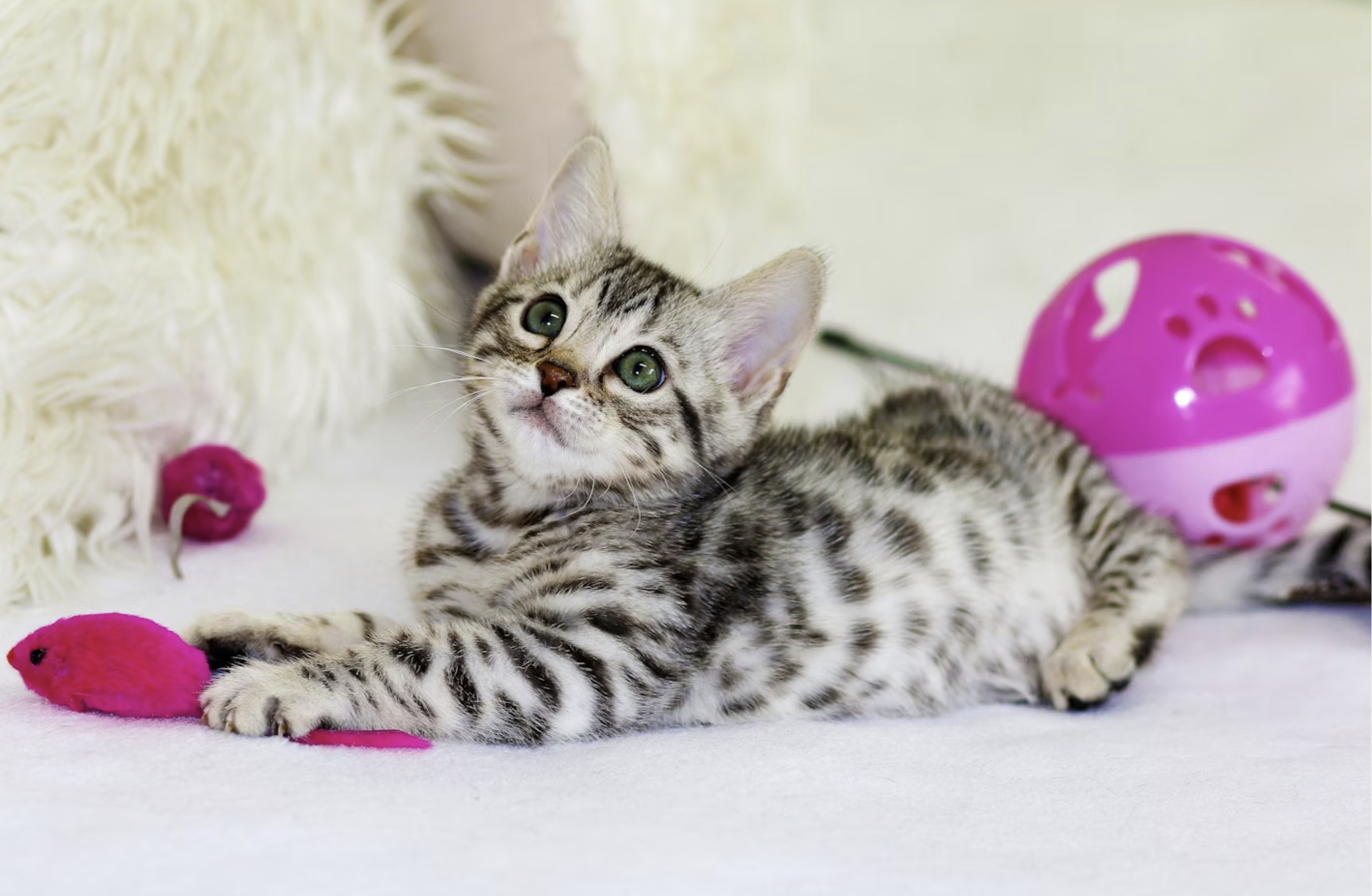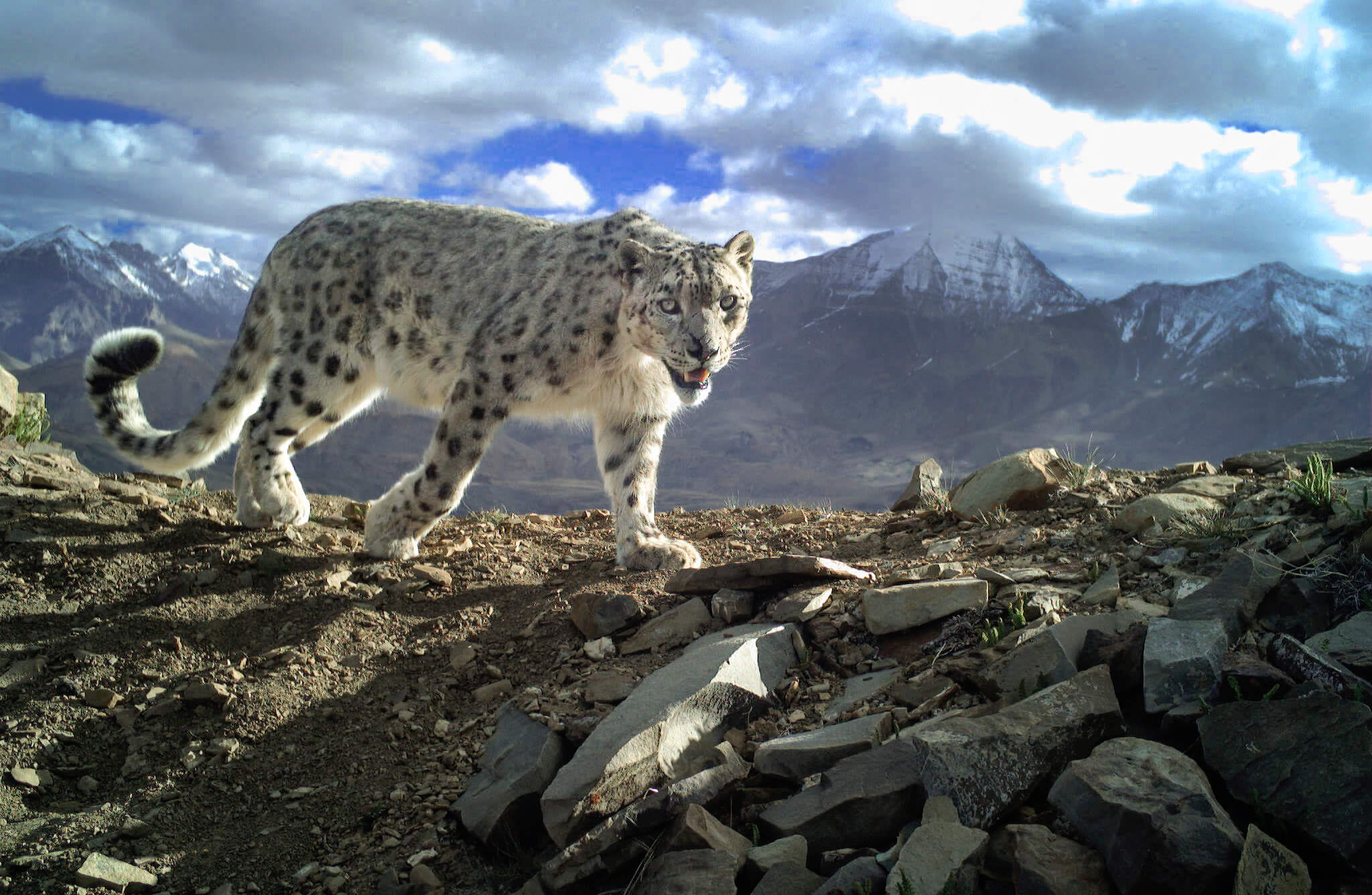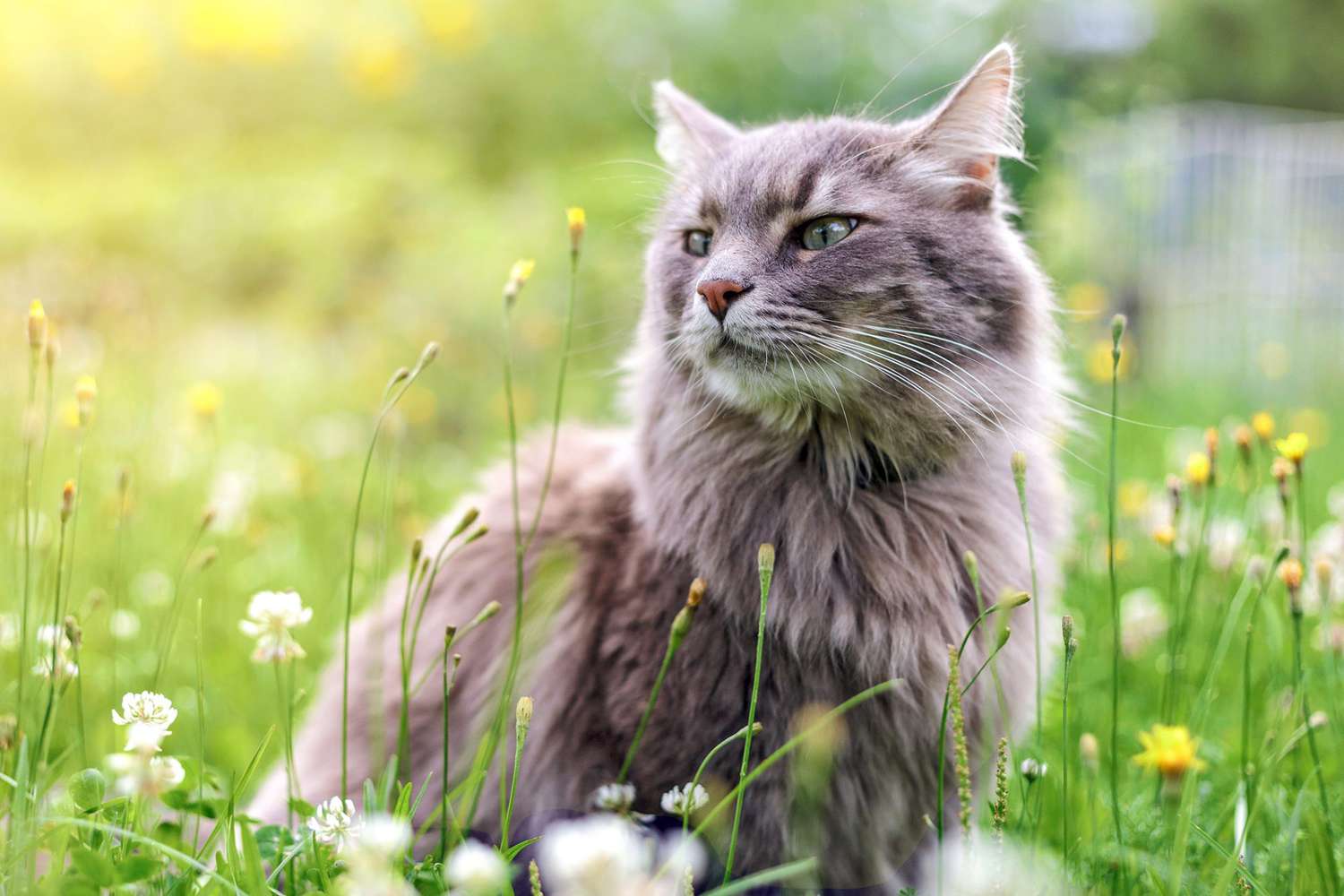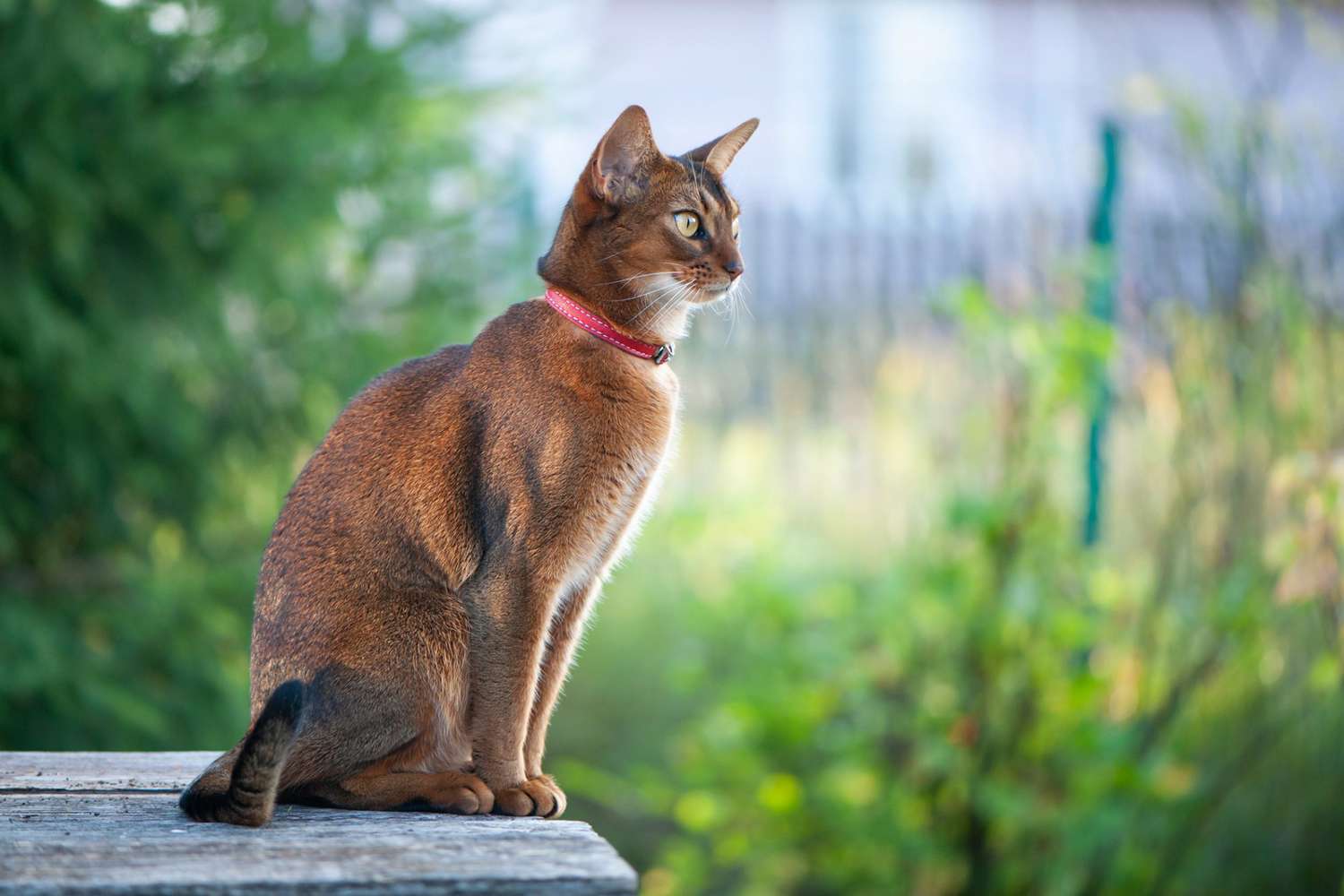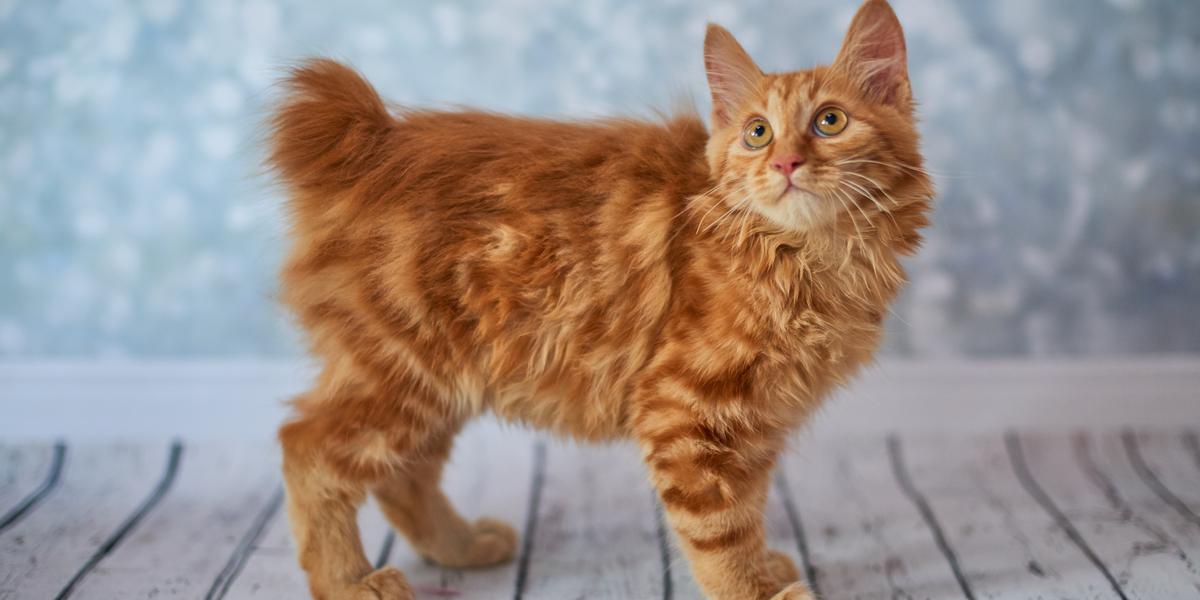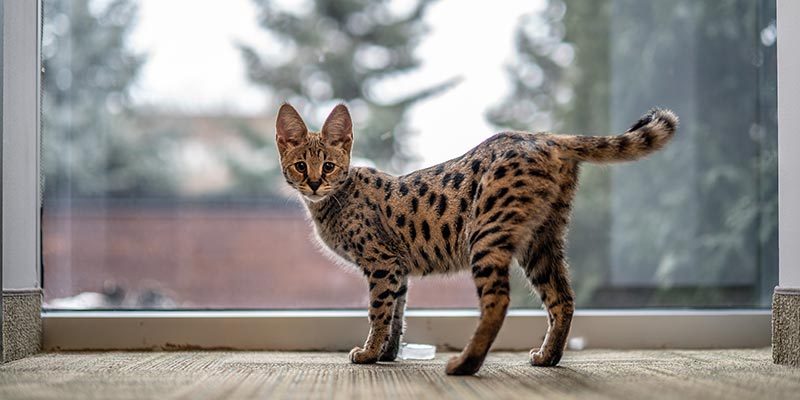Africa is home to a diverse range of wildlife, including many species of cats. Ten large and small types inhabit the continent, from majestic lions and cheetahs to smaller wildcats such as caracals and servals.
These remarkable creatures have adapted to a range of habitats in Africa, from dense forests to dry grasslands and deserts. The many felines of the animal kingdom are all similar in their solitary, predatory nature.
You are reading: 11 Large And Small Types Of African Cats
From lions to house cats, they are all obligate carnivores specializing in hunting and feasting on prey. Each species of cat is distinct and gorgeous in its way.
In this article, we will explore 11 large and small types of African cats, including the African Lion, Cheetah, Golden Cat, Caracal, Jungle Cat, Wildcat, Sand Cat, Black-footed Cat, Serval, Leopard, and African Wildcat.
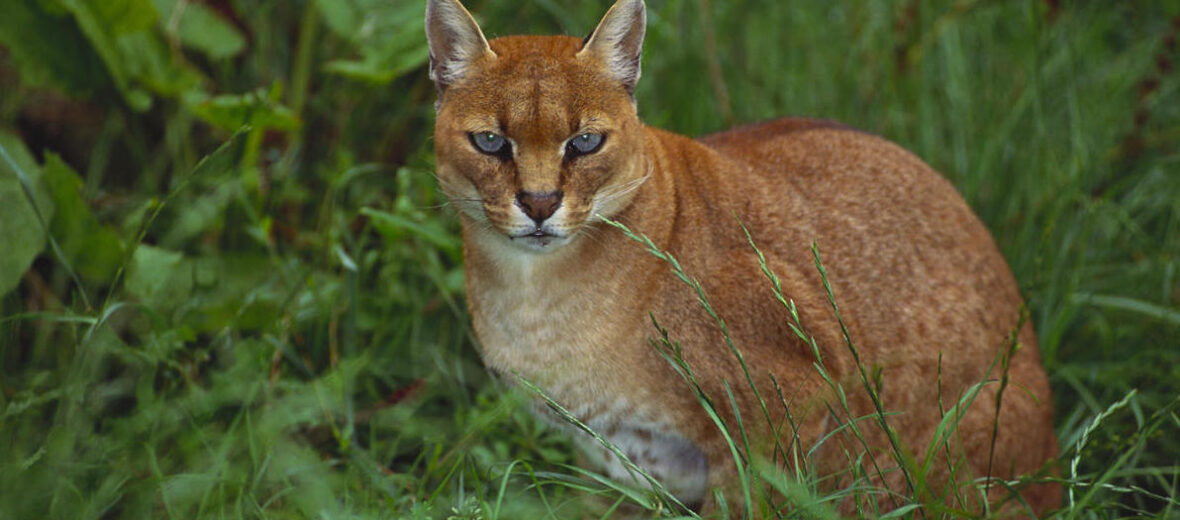
11 Large And Small Types Of African Cats
African Lion
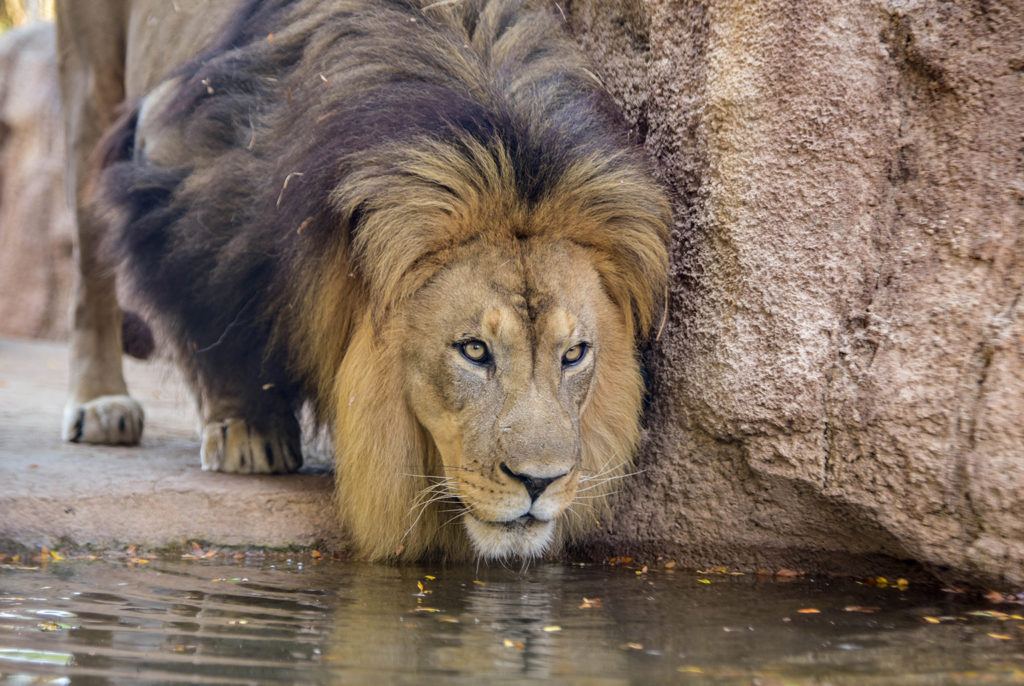
The African Lion (Panthera leo) is a large cat of the genus Panthera native to Africa and India. It is the largest of Africa’s big cats and is found throughout the continent.
African lions are sexually dimorphic, with adult male lions being larger than females. They have a muscular, broad-chested body, a short, rounded head, round ears, and a hairy tuft at the end of their tail.
African lions are typically found in savannas, plains, grasslands, dense bush, and open woodlands where prey is abundant. They can also be found in smaller numbers in semidesert and mountain habitats.
The lion prefers grassy plains and savannas, scrub bordering rivers, and open woodlands with bushes. It rarely enters closed forests. African lions are specialized communal predators of medium- to large-sized ungulates.
Typical prey includes antelopes, gazelle, warthogs, zebra, wildebeest, and sometimes Cape buffalo, giraffe, and young elephants. When prey is scarce, lions will consume almost any animal and scavenge off the kills of predators such as cheetahs or hyenas. In semi-arid habitats, they will also consume plants for water.
African lions have been admired throughout history for their symbols of courage and strength. These iconic animals have powerful bodies and roars that can be heard from five miles away. An adult lion’s coat is yellow-gold, and juveniles have some light spots that disappear with age.
Only male lions typically boast manes, the impressive fringe of long hair that encircles their heads. Lions are not currently endangered in Africa. However, three-quarters of their populations are in decline.
The main threats to African lions are human-wildlife conflict and natural prey decline, as well as habitat loss, climate change, and wildlife trade. With around 23,000 African lions left in the wild, they’re now officially classified as ‘vulnerable’.
Cheetah

The Cheetah (Acinonyx jubatus) is a large cat native to Africa, central Iran, and has been reintroduced to India in 2022. It is the fastest land animal, capable of running at 80 to 98 km/h (50 to 61 mph).
Cheetahs have evolved specialized adaptations for speed, including a light build, long thin legs, and a long tail. They typically reach 67–94 cm (26–37 in) at the shoulder, and the head-and-body length is between 1.1 and 1.5 m (3 ft 7 in and 4 ft 11 in).
Cheetahs are slim and have relatively long legs in relation to their body size when compared with other cats, with a small, rounded head and short ears. The historic distribution of cheetahs was very wide, ranging from Palestine and the Arabian Peninsula to Tajikistan and central India, as well as throughout the continent of Africa.
In 1927, an additional species of cheetahs was described as king cheetahs (Acinonyx rex), but it is now accepted that these individuals are an atypical phenotype of cheetahs (Acinonyx jubatus) with a slight melanistic trend.
The taxonomy of the cheetah is as follows:
– Kingdom: Animalia
– Phylum: Chordata
– Class: Mammalia
– Order: Carnivora
– Family: Felidae
– Subfamily: Felinae
– Genus: Acinonyx
– Species: Acinonyx jubatus (Schreber, 1776)
– Subspecies: A. j. hecki, A. j. jubatus, A. j. soemmeringii, A. j. venaticus
The cheetah is listed as vulnerable by the International Union for Conservation of Nature (IUCN).
Golden Cat
The African Golden Cat (Caracal aurata) is a medium-sized wild cat endemic to the rainforests of West and Central Africa. It is threatened due to deforestation and bushmeat hunting and is listed as Vulnerable on the IUCN Red List. The African Golden Cat is a close relative of both the caracal and the serval. Previously, it was placed in the genus Profelis.
– Distribution: The African Golden Cat is endemic to the rainforests of West and Central Africa. It only occurs in the tropical forests of equatorial Africa.
Read more : 8 Beautiful Types Of Siberian Cats
– Size: The body size of the African Golden Cat ranges from 61 to 101 cm (24 to 40 in) with a 16 to 46 cm (6.3 to 18.1 in) long tail.
– Relationship with Caracal and Serval: Phylogenetic analysis of cat samples showed that the African Golden Cat is closely related to the caracal (Caracal caracal). These two species, together with the serval (Leptailurus serval), form the Caracal lineage, one of the eight lineages of Felidae. This lineage evolved nearly 8.5 million years ago.
The African Golden Cat is one of the least-known felids in the world. Its unique characteristics, habitat, and threatened status make it a fascinating and important species to study and protect.
Caracal
The Caracal (Caracal caracal) is a medium-sized wild cat native to Africa, the Middle East, Central Asia, and arid areas of Pakistan and northwestern India. It is also known as the desert lynx or African lynx, although it is not a true lynx. Here are some key features and characteristics of the Caracal:
– Appearance: The Caracal has a robust build, long legs, a short face, long tufted ears, and long canine teeth. Its coat is uniformly reddish-tan or sandy, while the ventral parts are lighter with small reddish markings. The cat reaches 40–50 cm (16–20 in) at the shoulder and weighs 8–19 kg (18–42 lb).
– Habitat: Caracals live in rocky hills or grasslands in the Middle East, Africa, and South Asia. They are adaptable to various environments, including deserts, savannas, and forests.
– Behavior: Caracals are solitary animals, with adults spending much of their days alone, hunting for birds, rodents, rabbits, and gazelles. They are most active after sunset and have a built-in stealth mode, thanks to their superfast speed and footpads cushioned by stiff fur, which allows them to make practically no noise as they sprint toward their targets.
– Relationship with Humans: In the past, Caracals were trained for bird hunting in Iran and India, where they were put into arenas containing flocks of pigeons, and wagers were made on how many birds the cat would take down. This is the origin of the expression “to put a cat amongst the pigeons”. However, as wild animals, Caracals are not suitable as pets due to their territorial nature, messiness, and potential for aggression.
– Diet: Caracals prey on a variety of mammals, with the most common being rodents, hares, hyraxes, and small antelope. Unlike other small African cats, Caracals will not hesitate to kill prey larger than themselves, such as adult springbok or young Kudu. They have also been known to knock down 10-12 birds at once with their impressive leaping ability.
Jungle Cat
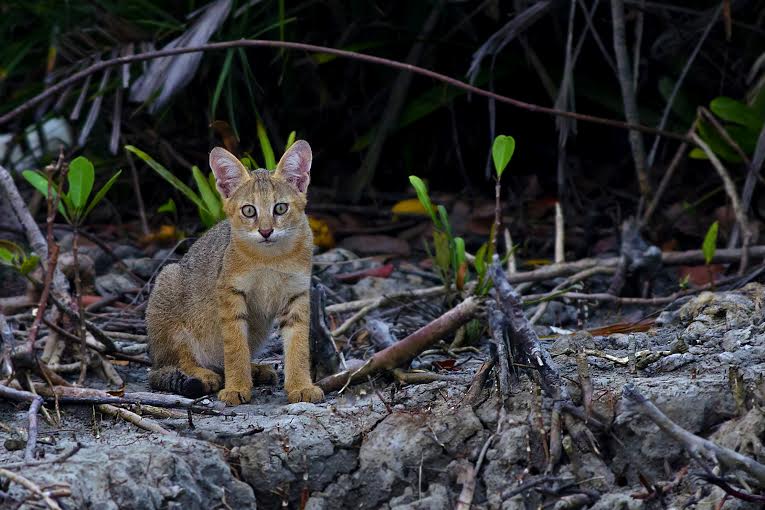
The Jungle Cat (Felis chaus) is a medium-sized wildcat native to Africa, Southwest and Central Asia, and the Sinai Peninsula. Here are some key features and characteristics of the Jungle Cat:
– Appearance: The Jungle Cat has short reddish-brown fur with spots on its sides and stripes on its head. Its legs are long in comparison to other cats of similar size, giving it an agile gait as it moves through dense vegetation such as grasslands or thickets. The average weight for males is 8–11 lbs, while females typically weigh in at 6–9 lbs.
– Habitat: Jungle Cats inhabit Africa’s Nile River Valley, usually in areas with tall grass, brush, or reeds. They can be found in desert regions, forested areas, and near riverbeds.
– Behavior: Jungle Cats are solitary animals, with adults spending much of their time hunting for small mammals, birds, and reptiles. They are known for their ability to swim and are often found near water sources.
– Conservation Status: The Jungle Cat is listed as Least Concern on the IUCN Red List, as it has a wide distribution and is not currently facing any major threats to its population. However, habitat loss and fragmentation due to human activities could pose a future risk to this species.
Wildcat
The Wildcat is a species complex comprising two small wild cat species: the European wildcat (Felis silvestris) and the African wildcat (F. lybica). Here are some key features and characteristics of the Wildcat:
– Appearance: The Wildcat has pointed ears, which are moderate in length and broad at the base. Its whiskers are white, numbering 7 to 16 on each side and reaching 5–8 cm (2.0–3.1 in) in length on the muzzle. Whiskers are also present on the inner surface of the paw and measure 3–4 cm (1.2–1.6 in). Its eyes are large, and its fur pattern, tail, and size differ between the European and African wildcat species.
– Habitat: The European wildcat inhabits forests in Europe, Anatolia, and the Caucasus, while the African wildcat inhabits semi-arid landscapes and steppes in Africa, the Arabian Peninsula, Central Asia, western India, and western China.
– Behavior: Wildcats are solitary animals, with adults spending much of their days alone, hunting for small mammals, birds, and reptiles. They are most active during dawn and dusk, using their excellent night vision and hearing to locate prey.
– Conservation Status: The European wildcat is listed as Near Threatened on the IUCN Red List, primarily due to habitat loss, hybridization with domestic cats, and persecution. The African wildcat is listed as Least Concern, but its populations are declining in some areas due to habitat loss and hybridization with domestic cats. Conservation efforts are crucial to ensure the long-term survival of both species.
Sand Cat
The Sand Cat (Felis margarita) is a small African wild cat that inhabits arid and desert regions in Africa, the Arabian Peninsula, and southwest Asia. Here are some key features and characteristics of the Sand Cat:
– Appearance: The Sand Cat has a stocky body with short legs and a long tail. Its fur is sandy to light grey, providing excellent camouflage in the desert environment. It has large triangular ears, measuring 5-7 cm (2.0-2.8 in), which are set low on the sides of the head, aiding in the detection of prey moving underground.
– Habitat: This species is well adapted to live in sandy and stony deserts, far from water sources. It can tolerate extreme temperatures ranging from -5°C (23°F) to 52°C (126°F). The Sand Cat is found in the Sahara, the Arabian Desert, and the deserts of Iran and Pakistan.
– Subspecies: There are six recognized subspecies of the Sand Cat, each with its own distribution range:
– Felis margarita margaritNorth Africa, from Algeria to Arabia
– Felis margarita airensis: Niger
– Felis margarita harrisoni: Arabian Peninsula
– Felis margarita meinertzhageni: Sahara
– Felis margarita thinobiCaspian Sea area (Iran, Turkmenistan)
– Felis margarita scheffeli: Southwest Asia
– Behavior: Sand Cats are solitary animals that mainly feed on small desert rodents, hares, birds, reptiles, and insects. They rarely drink water and obtain sufficient moisture from their prey. These cats dig burrows or extend other animals’ burrows to live in and escape the harsh desert conditions.
Read more : 10 Types Of Ragdoll Cats
– Conservation Status: The Sand Cat is currently listed as Least Concern on the global conservation status, but its status may vary within each country. Efforts are being made to study and protect this unique desert-dwelling species.
Black-footed Cat
The Black-footed Cat (Felis nigripes) is the smallest wild cat in Africa, with a head-and-body length of 35–52 cm (14–20 in) and a weight of 1-2.5 kg (2.2-5.5 lbs) . Here are some key features and characteristics of the Black-footed Cat:
– Appearance: The Black-footed Cat has a soft, dense coat that ranges from dark to pale tawny gold, with a bold pattern of rounded dark brown to black spots that sometimes merge into bands or rings. Its large eyes are amber or greyish-brown, and the chin, chest, belly, and insides of the legs are whitish. The backs of the ears are pale brown, and there are two dark streaks across each cheek, and dark bars on the forelegs and haunches.
– Habitat: Black-footed Cats are nocturnal inhabitants of the arid lands of southern Africa, typically associated with open, sandy grassy habitats with sparse scrub and tree cover. They live in abandoned burrows dug or in holes in termite mounds during the day.
– Behavior: Black-footed Cats are solitary and secretive animals, with adults spending much of their time hunting for small mammals, birds, and reptiles. They are most active at night and have excellent night vision and hearing to locate prey. They are also known for their ability to climb trees and jump up to six times their body length.
– Conservation Status: The Black-footed Cat is listed as Vulnerable on the IUCN Red List, primarily due to habitat loss, degradation, and fragmentation, as well as hunting and poisoning. The species is protected by national legislation across most of its range, and hunting is banned in Botswana and South Africa. The Black-footed Cat is one of the least studied wild cats in Africa, and more research is needed to understand its ecology and behavior.
Serval
The Serval (Leptailurus serval) is a medium-sized wild cat native to Africa, known for its unique appearance and hunting abilities. Here are some key features and characteristics of the Serval:
– Appearance: Servals have a small, slim face with large, oval-shaped ears, which are their most distinctive feature. They have a golden-yellow to buff coat, with black spots and stripes, and a short, black-tipped tail. The species has the longest legs relative to its body size of any cat, giving it a tall and slender appearance.
– Habitat: Servals are found throughout much of sub-Saharan Africa, excluding rainforest regions. They inhabit various types of grassland, often near water sources and associated vegetation such as reed beds and marshes. Servals are adaptable and can also be found in human-altered landscapes, including farmlands and tourist areas.
– Behavior: These cats are primarily solitary, except during the breeding season. They are crepuscular, meaning they are most active during dawn and dusk, although they may become nocturnal in areas with high human activity. Servals have a hunting success rate of 48%, which is higher than other members of the Felidae family. Their diet consists mainly of small mammals, such as rats, mice, and shrews, as well as birds, insects, frogs, and lizards.
– Conservation Status: The Serval is currently listed as Least Concern on the IUCN Red List, as its population is relatively stable and it has a wide distribution range. However, local populations may be threatened by habitat loss, degradation, and fragmentation, as well as hunting and trapping for their fur. In some areas, they are also killed in retaliation for preying on domestic animals, such as poultry and small livestock.
Leopard
The African Leopard (Panthera pardus pardus) is the nominate subspecies of the leopard, native to many countries in Africa. It is widely distributed in most of sub-Saharan Africa, but the historical range has been fragmented in the course of habitat conversion. Here are some key features and characteristics of the African Leopard:
– Appearance: African Leopards have a pale yellowish to dark golden fur with dark spots grouped in rosettes. The spots are circular in East African leopards, but square in Southern African leopards. They have a broad head, powerful jaws, and a long, muscular body, with males weighing up to 90 kg (200 lbs) and females up to 60 kg (130 lbs).
– Habitat: African Leopards inhabit various types of grassland, often near water sources and associated vegetation such as reed beds and marshes. They are also found in forests, mountains, and deserts. African Leopards are adaptable and can also be found in human-altered landscapes, including farmlands and tourist areas.
– Behavior: African Leopards are solitary and territorial animals, with adults spending much of their time hunting for small mammals, birds, and reptiles. They are most active during dawn and dusk, although they may become nocturnal in areas with high human activity. African Leopards are excellent climbers and can drag prey weighing up to three times their body weight up into trees to protect it from scavengers.
– Conservation Status: The African Leopard is currently listed as Vulnerable on the IUCN Red List, as its population is declining due to habitat loss, degradation, and fragmentation, as well as hunting and poaching for their fur and body parts. The commercialized bushmeat trade has also caused a collapse of prey populations across large parts of savanna Africa, which has further threatened the survival of African Leopards. Conservation efforts are crucial to ensure the long-term survival of this iconic African predator.
Lion
The lion (Panthera leo) is a large cat native to Africa and India. It is a social species, forming groups called prides, which consist of a few adult males, related females, and cubs. Adult male lions are larger than females and have a prominent mane. Here are some key facts about African lions:
– Scientific Name: Panthera leo
– Type: Mammals
– Diet: Carnivore
– Group Name: Pride
– Size: Head and body, 4.5 to 6.5 feet; tail, 26.25 to 39.5 inches
– Weight: 265 to 420 pounds
– IUCN Red List Status: Vulnerable
– Habitat: Savannas, plains, grasslands, dense bush, open woodlands, semidesert, and mountain habitats
– Range: Most countries in sub-Saharan Africa, primarily inhabiting eastern and southern Africa up to elevations of 13,700 ft. (4,200 m)
– Prey: Medium- to large-sized ungulates, including antelopes, gazelle, warthogs, zebra, wildebeest, and sometimes Cape buffalo, giraffe, and young elephants. They will also scavenge off the kills of other predators when prey is scarce
In addition to the African lion, there is a subspecies called the Asiatic lion (Panthera leo persica), which has a very small population surviving in India’s Gir Forest. Some taxonomists argue that there are five extant African lion subspecies, each identified by its geographic region. These subspecies are:
– Panthera leo senegalensis (West African or Senegalese lions)
– P. l. azandica (North East Congo lions)
– P. l. bleyenberghi (Katanga, Angolan, or South Congo lions)
– P. l. krugeri (South African or Transvaal lions, which includes Kalahari lions sometimes denoted as P. l. verneyi)
FAQS
1. How many types of African cats are there?
Africa is home to 11 different types of wild cats, including two big cats (African lion and leopard) and nine small cats (cheetah, serval, caracal, African golden cat, jungle cat, sand cat, African wildcat, and black-footed cat).
2. Are all African cats native to Africa?
Three African cats are endemic to the African continent: African golden cat, serval, and black-footed cat. The other seven cats also occur in parts of Asia and the Middle East.
3. What are the unique characteristics of African cats?
African cats have various unique characteristics. For example, the African golden cat, serval, and black-footed cat are endemic to the African continent, while the cheetah is known for its incredible speed and the African wildcat resembles a domestic cat.
4. What are the habitats of African cats?
African cats inhabit a range of habitats, including savannas, tropical rainforests, mangrove swamps, boreal forests, grasslands, and deserts. Some cats, like the jungle cat, are adapted to live in wetland areas.
5. Are African cats endangered?
The conservation status of African cats varies. For example, the African lion is listed as vulnerable, while the African wildcat is considered of least concern. The black-footed cat, on the other hand, is the second smallest wild cat in the world and faces threats due to habitat loss and predation.
6. Can African cats be kept as pets?
While some small exotic cat species can be kept as pets, it is important to note that they require specific care and are not suitable for everyone. Additionally, keeping wild cats as pets may be illegal in some areas, and it is crucial to prioritize the conservation of these species in their natural habitats.
Source: https://petstutorial.com
Category: Cats

